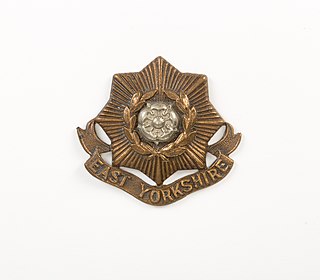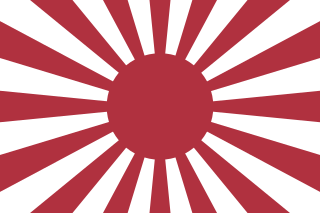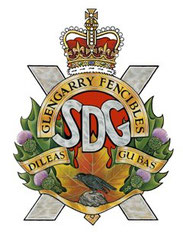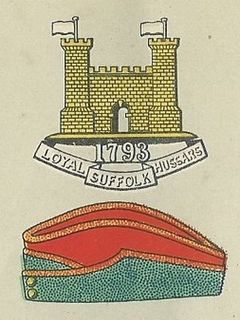 W
WThe 1st Durham Engineers, later Durham Fortress Engineers, was a Volunteer unit of the British Army's Royal Engineers. First founded in 1868 it was sometimes united with the Tyne Electrical Engineers, at other times it formed an independent unit. Although its main role was defence of the North East Coast of England, the unit sent detachments on active service to the Suakin Expedition, the Second Boer War, and the Western Front and Italy during the First World War.
 W
WThe Tower Hamlets Engineers was a Volunteer unit of the British Royal Engineers (RE) based in East London. Raised in 1868, it provided engineers for two London infantry divisions of the Territorial Force during World War I. In World War II it operated as an RE headquarters, particularly on D-Day and at the Rhine Crossing, while its subordinate companies served in a number of campaigns, including the Siege of Tobruk and with the Chindits. Its successor unit continues to serve in today's Army Reserve.
 W
WThe 1st Dorsetshire Artillery Volunteers and its successors were part-time coast defence units of the British Army from 1859 to 1956. Although these units saw no action, they protected the Dorset Coast, including the naval base of Portland Harbour, in both World Wars and also supplied trained gunners to siege batteries engaged on the Western Front during World War I. The unit continued in the Territorial Army after World War II.
 W
WThe 2nd (Seaham) Durham Artillery Volunteer Corps was a part-time unit of Britain's Royal Artillery raised in County Durham by the Vane-Tempest family during an invasion crisis in 1860. It became a permanent part of the Volunteer Force and later the Territorial Force, and fought as field artillery on the Western Front in World War I. Before World War II it became an anti-aircraft unit that served in the Battle of Britain, the Blitz and in the Far East where it converted to medium artillery in the Burma Campaign. Postwar, it continued to serve in the air defence role in the Territorial Army until 1955.
 W
WThe 5th (Cyclist) Battalion, East Yorkshire Regiment was a mobile coast defence unit of Britain's Territorial Force. It was formed in 1908 from a nucleus provided by a Volunteer battalion first raised in 1859. It carried out its defence duties along the East Coast throughout World War I and after the war it was incorporated into a unit of the new Royal Corps of Signals.
 W
WThe 5th Battalion, Devonshire Regiment, was a part-time unit of the British Army recruited in the county of Devon. It was formed in the Territorial Force in 1908 by amalgamating two existing Volunteer Battalions of the Devonshire Regiment. The battalion served in India and fought in Palestine and on the Western Front during World War I. In World War II it provided two anti-tank artillery units, which served in Tunisia, Italy and North West Europe. They were both merged into other Devonshire units in 1950.
 W
WThe Post Office Rifles was a unit of the British Army, first formed in 1868 from volunteers as part of the Volunteer Force, which later became the Territorial Force. The unit evolved several times until 1921, after which the name was lost during one of many reorganisations.
 W
WThe Glasgow Highlanders was a former infantry regiment of the British Army, part of the Territorial Force, later renamed the Territorial Army. The regiment eventually became a Volunteer Battalion of the Highland Light Infantry in 1881. The regiment saw active service in both World War I and World War II. In 1959 the Highland Light Infantry was amalgamated with the Royal Scots Fusiliers to form the Royal Highland Fusiliers. The Glasgow Highlanders was later amalgamated into the 52nd Lowland Volunteers in 1967.
 W
WThe Glasgow Highlanders was a former infantry regiment of the British Army, part of the Territorial Force, later renamed the Territorial Army. The regiment eventually became a Volunteer Battalion of the Highland Light Infantry in 1881. The regiment saw active service in both World War I and World War II. In 1959 the Highland Light Infantry was amalgamated with the Royal Scots Fusiliers to form the Royal Highland Fusiliers. The Glasgow Highlanders was later amalgamated into the 52nd Lowland Volunteers in 1967.
 W
WThe Imperial Japanese Army was the official ground-based armed force of the Empire of Japan from 1868 to 1945. It was controlled by the Imperial Japanese Army General Staff Office and the Ministry of the Army, both of which were nominally subordinate to the Emperor of Japan as supreme commander of the army and the Imperial Japanese Navy. Later an Inspectorate General of Aviation became the third agency with oversight of the army. During wartime or national emergencies, the nominal command functions of the emperor would be centralized in an Imperial General Headquarters (IGHQ), an ad hoc body consisting of the chief and vice chief of the Army General Staff, the Minister of the Army, the chief and vice chief of the Naval General Staff, the Inspector General of Aviation, and the Inspector General of Military Training.
 W
WThe Kiheitai was a well-trained volunteer militia raised by Takasugi Shinsaku of the Chōshū Domain during the Bakumatsu period of Japan.
 W
WThe Old Guard of the City of New York is a veterans' organization and ceremonial unit in New York City. It was consolidated in 1868 when state legislation merged the predecessor organizations the New York Light Guard and the New York City Guard. Its longtime headquarters was at 307 W 91st St from 1920-2016, a historic building dating from 1896 by the architect Clarence True. The unit was known for its elaborate uniforms with bearskin caps, its participation at civic events, and its annual ball. The Old Guard Headquarters are now located at 285 West 246th Street, Bronx, NY 10471.
 W
WThe Post Office Rifles was a unit of the British Army, first formed in 1868 from volunteers as part of the Volunteer Force, which later became the Territorial Force. The unit evolved several times until 1921, after which the name was lost during one of many reorganisations.
 W
WThe Presidential Guard is a ceremonial infantry unit that guards the Tomb of the Unknown Soldier and the Presidential Mansion in Athens, Greece. The unit is distinguished as the last unit of Evzones in the Hellenic Army, and is closely associated with the traditional Evzone's uniform, which evolved from the clothes worn by the klephts in the Greek War of Independence. The most visible item of this uniform is the fustanella, a kilt-like garment. In 1868–1914 and 1937–1973, the guard also included a cavalry company.
 W
WThe Royal Croatian Home Guard was the Croatian-Slavonian army section of the Royal Hungarian Landwehr, which existed from 1868 to 1918. The force was created by decree of the Croatian Parliament on December 5, 1868 as a result of the Croatian-Hungarian Settlement.
 W
WStormont, Dundas and Glengarry Highlanders is a Primary Reserve infantry regiment of the Canadian Army. It is part of 33 Canadian Brigade Group, 4th Canadian Division and is headquartered in Cornwall, Ontario.
 W
WThe Duke of Yorks Own Loyal Suffolk Hussars was a Yeomanry regiment of the British Army. Originally formed as a volunteer cavalry force in 1793, it fought in the Second Boer war as part of the Imperial Yeomanry. In the World War I the regiment fought at Gallipoli, in Palestine and on the Western Front. The unit was subsequently converted into a Royal Artillery unit, serving in the anti-tank role North Africa, Italy and France during World War II. The lineage is maintained by No. 677 Squadron AAC.